#President Roosevelt
Note
Gerald Ford vs. Teddy Roosevelt, no holds barred MMA fight. Who wins?
Despite his portrayal as a clumsy oaf, Gerald Ford was almost certainly the best athlete to ever serve in the White House. He was a legendary college football player who won two national championships at the University of Michigan, and was MVP of the team in his senior year. Ford turned down contract offers from the Detroit Lions and the Green Bay Packers, but turned down a career in the NFL in order to attend law school. Ford was a avid skier until his 80s and continued swimming regularly for exercise into his 90s, and he would have had a notable size advantage over Theodore Roosevelt.
However, if someone genuinely knows what they are doing during a mixed martial arts fight, they are going to be very difficult to defeat -- even against an opponent who might be a superior athlete in every other sense. That has been a lesson learned throughout the growth of MMA as a mainstream sport dating back to Royce Gracie easily handling much bigger opponents in the early UFC with his Brazilian Jiu Jitsu. Or Rickson Gracie calmly controlling and systematically dominating literally everyone he fought in Japan, no matter who Pride FC threw at him.
Theodore Roosevelt would be giving up quite a bit of size and athletic ability against Gerald Ford, but TR was an early student of martial arts. As President -- in the White House itself -- Roosevelt kept active with wrestling (always the best foundation for a mixed martial artist) and boxing. And he was among the first Americans to actually train in jiu jitsu and judo, receiving lessons directly from the legendary Yamashita Yoshiaki. Because of that experience, I think Theodore Roosevelt probably would have given any of his fellow Presidents a rough day at the office if they had an MMA fight, no matter how big or strong or athletic his opponent might be.
#What if?#Great questions#Theodore Roosevelt#President Roosevelt#Gerald Ford#President Ford#Presidents#Presidential Brawls#Martial Arts#Jiu jitsu#judo#Wrestling#Boxing#MMA#Mixed Martial Arts#Gracie Jiu Jitsu#Royce Gracie#Rickson Gracie#UFC#Pride FC#University of Michigsn#Presidential Athletes#History
78 notes
·
View notes
Text
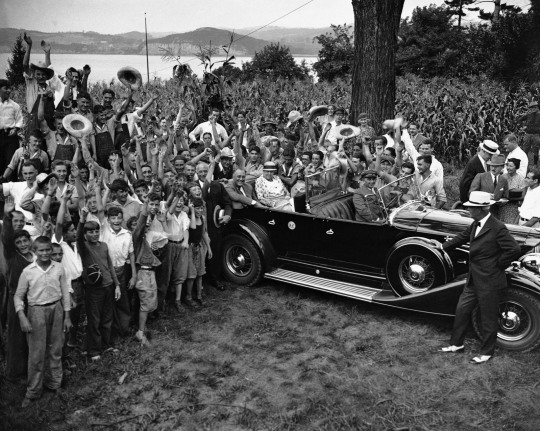
TODAY’S FROZEN MOMENT - 90th Anniversary - August 10th, 1933 -
Here was President Roosevelt, who brought along his mother Sara Roosevelt, to come and cheer this group of New York City boys who had been working the soil at Bowdoin Farm, near Poughkeepsie, New York, as part of a farm program set up through the government and the Children’s Aid Society. This socialist libtard farm program for kids… during a depression… teaching skills while providing them a little food… complete with a president taking the time to visit and salute them… to give kids the sense that they are part of a nation, all working together… classic progressive American initiative… my America…
[h/t Mary Elaine LeBey]
+
“Compassion is not weakness, and concern for the unfortunate is not socialism.”
― Hubert H. Humphrey
#democracy#liberalism#progressivism#progressive American initiative#Mary Elaine LeBey#President Roosevelt#1933#quotes#Hubert H. Humphrey
12 notes
·
View notes
Text

#simple man#manliness#simple life#christian manhood#traditional manhood#traditional gender roles#chivalry#traditional man#tradblr#gentleman#roosevelt#theodore roosevelt#righteous path#righteous#loving#protect and serve#straight male#patriarchy#pro patriarchy#president roosevelt#peace#prosperity#honor#traditionalism
25 notes
·
View notes
Text

WPA Workers Association membership card.
#typography#vintage typography#wpa#wpa workers association#vintage membership cards#membership cards#works progess administration#the great depression#the 30s#1930s#fdr#franklin delano roosevelt#president roosevelt
3 notes
·
View notes
Text

Theodore Roosevelt as Badlands hunter, 1885
Theodore Roosevelt is seen with his highly-decorated deer-skin hunting suit, and [[Tiffany]]-carved hunting knife and rifle. Photographed by George Grantham Baine in 1885
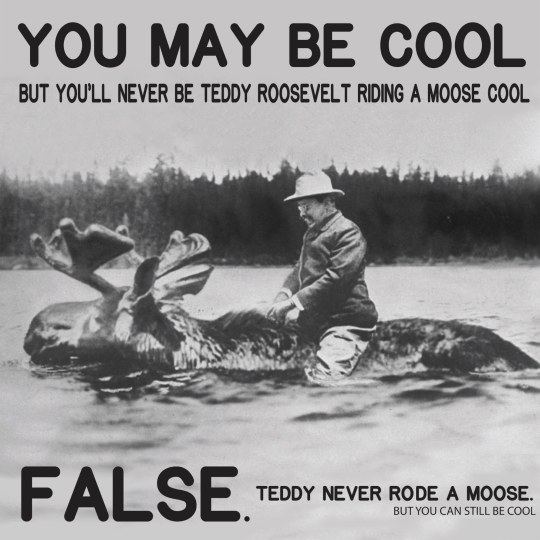
The graphic is an early example of photoshopping. It was the work of photography firm Underwood and Underwood, who painstakingly cut out an image of TR riding a horse and pasted it onto an image of a swimming moose. And another...

1 note
·
View note
Text

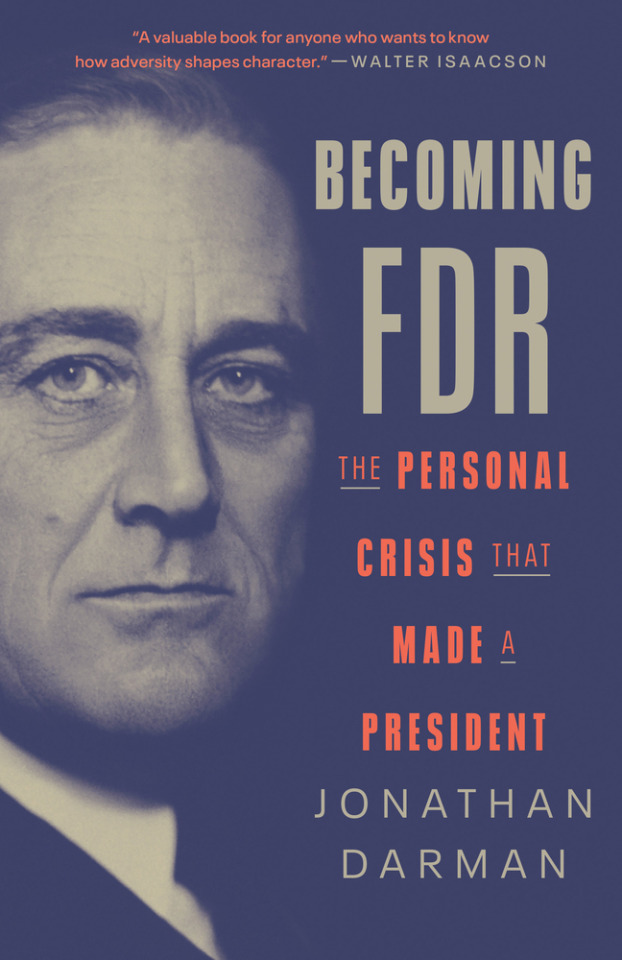
Poet Scarlett Sabet with the book Becoming FDR by Jonathan Darman.
Poet Scarlett has been a lifelong reader.
Photos: Scarlett Z Sabet Instagram, Thriftbooks
0 notes
Text
The Panama Canal's Epidemiology
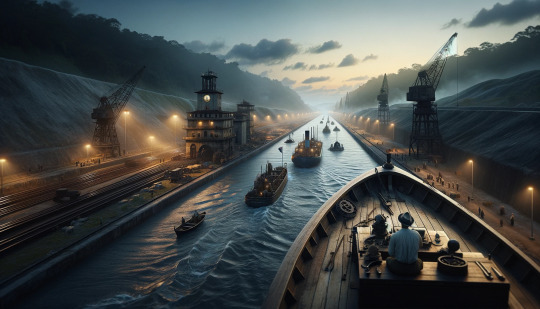
Cowards die many times before their deaths;
The valiant never taste of death but once.
William Shakespeare, Julius Caesar, 1599
Another oversight shunned by Americans but had hampered the French was the latter’s want of disease control claiming 22,000 lives. The Canal’s predecessors seem to have stood idly by as the grim toll of pestilence decimated the ranks of workers. The ubiquity of funeral trains laden with remains ravaged by malaria and yellow fever testified to the illiteracy for epidemiology on the isthmus at the time. The arrival in 1904 of Colonel William Gorgas who helmed the Department of Sanitation would herald a paradigm shift. In a bid to end the miasma of stagnation throttling the Canal’s progress a regimen for prophylaxis displaced the unreconstructed one of therapeutics. In taking stock of this epidemic Gorgas took the offensive with his petition for countermeasures against the blight of mosquitos which bore culpability for the tyranny of death. In a knee-jerk response Chief Engineer John Wallace balked at this cri de coeur and abruptly resigned but his successor John Stevens elected instead to mobilize four thousands engineers against this vector of infirmity. Such a theory of transmission first gained prominence in 1900 when Gorgas and his peer Dr Walter Reed quarterbacked off the scientific corpus of physician Carlos Finlay who fathomed causality between mosquitos and Cuba’s mortality rate.
The capital of Havana was once a necropolis-cum-laboratory writ large for testing the pathogenesis of disease when the dated Miasma Theory had long been medical lore. This established dogma equated illness with fetid air but germ theory began to gain currency over the cognoscenti particularly after physician John Snow mapped London’s cholera outbreak in 1854 to a contaminated water pump. Neither fomites nor foul gasses from decaying matter sickened the population as it was firmly believed. By the dawn of the 20th century a consensus that looked askance at the communicability of polluted air crescendoed into Cuba’s Yellow Fever Commission which defenestrated this relic of a theory for good. Although the idea specific to mosquito-borne transmission languished in obscurity for two decades due to a lack of empirical evidence it was Gorgas and Reed who put the hypothesis under scrutiny anew. Amidst the onslaught of yellow fever besieging Havana in the wake of the Spanish-American War a public health crusade was set loose to pinpoint the cause. At Camp Lazear mosquitos revealed themselves to be the vector for the rogues’ gallery of disease running amok across the archipelago of islands. No longer captured by ignorance a new edict thus spurred proactive measures to spoil the habitat of these winged critters.
Lessons of sanitation from Cuba were exported to Panama three years later so the Canal could be salvaged after the heavy toll exacted upon the French. The intervention by Gorgas and his army of engineers would consume 35 percent of the project’s lucre in its most prolific phase which systematically fumigated buildings, scythed down tall grass and drained standing water (Rogers 2014: 156). The big dike would have come to naught were it not for such mitigation lest panic prompt workers to flee which they initially did. Fear was sown most acutely in the spring of 1905 when three-quarters of expatriates boarded steamers bound for New York (Rogers 2014). In fact Chief Engineer Wallace tendered his resignation amongst this very same cohort to escape the harrowing crisis a mere fifteen months after his appointment. Prior to Gorgas’ breakthrough this pall of phobia put the Canal at risk since the etiology of yellow fever and malaria was little understood and speculation gave rise to hysteria. The psychological trauma borne from this indiscriminate threat spared no one as labourers and administrators alike were prostrate with fear when symptoms between jaundice and hemorrhages gnawed at morale. Salvation against such defeatism came by Gorgas who won credence as the spectre of disease subsided.
By happenstance Roosevelt’s industrial policy on the Isthmus engendered nothing short of a revolution in epidemiology. Many of the remedies to ward off infection would be universally adopted much like how screen windows find themselves in homes today. After Gorgas procured $90k of these copper meshes for structures abutting the Canal this same feature saw prevalence in the abodes of South Florida until it evolved into standard practice for homebuilders (Rogers 2014). Other measures brought to bear included: (1) drainage of pools within a radius of a hundred yards from dwellings; (2) admixtures of oil and kerosene as larvicide that coated swamps; (3) prophylactic daily doses of quinine made available at dispensaries. Statistics fructified these concerted efforts as hospitalization rates from malaria declined sharply between 1905 and 1909 from 9.6 percent of the workforce to 1.6 percent. Where deaths mounted each month from yellow fever by 1906 only one non-fatal case emerged for the entire year. Under Gorgas’ residency the bête noire of pestilence appeared to be all but eradicated. The sea change placated the public relations fiasco ginned up by the fourth estate back home and by 1913 the tide of disease was stemmed insofar as 5.2 deaths per thousand were recorded (Maurer and Yu 2023).

The seminal public health policies on the isthmus curved the bacchanalia of death where once the Canal stood on the precipice of failure. Within the firmament of construction a symbiosis between epidemiology and engineering is seldom seen whose absence in this case would have conduced to a French redux of futility. Whether by machine or microbial mitigation success on the Canal hinged on the mastery of nature that defied human control for millennia. At the dawn of the 20th century President Roosevelt’s industrial policy reversed this longstanding status quo as a testament to America’s preeminence. Akin to a palimpsest the project went on to domesticate the jungle where once this notion bordered on the realm of science fiction. The saga of the Canal therefore bears the hallmarks of engineering just as much as epidemiology. If the lifecycle of the Anopheles and Aedes aegypti mosquito was not disrupted it is dubious if the Canal would have ever seen the light of day. What made matters untenable was how in the incipient stages the Canal became tantamount to a lottery of death. The scare from an invisible foe brought work to a standstill. Were it not for the draconian interventions the flight of workers would have continued unabated. Until and unless Gorgas hedged against disease the Canal could not proceed.
0 notes
Text
Pizza Bread
Fusion Entree
PIZZA BREAD
INGREDIENTS
½ bell pepper
1 small onion
8 slices bread
1 teaspoon oregano or pizza seasoning
24 slices pepperoni
1 cup grated mozzarella cheese
½ cup pasta sauce (8 times at 1 tablespoon)
SPECIAL UTENSILS
mandoline (optional)
parchment paper
9″ * 12″ baking tray
Serves 4 or makes 8 pizza breads. Takes 20 minutes.
PREPARATION
Preheat oven to 400…

View On WordPress
#bell pepper#bread#Comic Chef#hot dogs#King Charles III#King George VI#New York Times#oregano#parchment paper#pasta sauce#pepperoni#pizza bread#President Roosevelt#Roosevelt
0 notes
Text
'Oppenheimer is a movie devoted to two related stories – how, under the scientific direction of Robert Oppenheimer the US produced an atom bomb in time to be used against Japan at in the Second World War, and how after that achievement Oppenheimer, by now the Director of the Institute for Advanced Studies in Princeton had his security clearance revoked and was removed from advising the US government on nuclear weapons work.
Australian (and British) viewers will benefit from knowing about the role which Mark Oliphant (then in Birmingham) played behind the scenes in getting the atomic project going.
The movie was exciting and kept you on the edge of your seat. One expects that movies distort or omit historical or scientific facts, in the effort to produce a good spectacle and a good story. As I was enjoying the story, and the spectacle, I found myself becoming more and more annoyed by these distortions and omissions.
The critical fact which was omitted was that the determination that an atomic bomb could be constructed in a small enough package to be delivered by air was made in Britain, and that information was provided to the US early in 1941, but initially the US did not act on it. Mark Oliphant late in 1941, forcefully reminded the US of those discoveries and work started. Without the British action it is unlikely that the atomic bomb would have been available before the Allied invasion of Japan.
The distortion which I found irritating was the prominence given to the 1939 work of Oppenheimer, with his PhD student H. Snyder on black holes. This paper had no impact on the work on the production of the atom bomb. Perhaps it was introduced into the movie to provide an excuse for the endless and irrelevant images of stars and galaxies. Artistic licence – yes, but very annoying to me.
When the process of nuclear fission was discovered in 1938 in Germany and elucidated and explained in Europe and the US in 1939, the possibility of a nuclear fission bomb was obvious to many physicists. It was not immediately apparent what the dimensions of such a bomb would be, whether it could be readily delivered by air or not. The famous 1941 letter (composed by Szilard) from Einstein to President Roosevelt was not able to hint at the answer, and the Uranium Commission set up by the President to investigate concentrated its activity on the possible use of nuclear reactors to power submarines.
The breakthrough was made by Rudolf Peierls and Otto Frisch, two Jewish refugees working at the Department of Physics at the University of Birmingham. Mark Oliphant, the Head of the Physics Department had arranged jobs for them. Oliphant had a large group working on radar. That work was secret and Peierls and Frisch, being German aliens were not allowed to join the secret war work. Instead, they worked together on the calculation of how large a Uranium bomb would be, and what effects it would have. Peierls hand typed the now famous Peierls Frisch Memorandum and handed it to Oliphant. The now unclassified memorandum is available from several sources, one of which points out they make an error and instead of their estimate that 600 gram of uranium 235 would make a bomb, the correct estimate is 18 Kg.
Oliphant passed the memorandum to those responsible for considering the likely use of Uranium in the war, and the MAUD committee was set up to verify and work through the implications of the Peierls Frisch memorandum. The report is now unclassified and is available here. They recognised that the Atomic Bomb was feasible with Uranium in which the Uranium 235 isotope was enriched, but that the resources required for program were far beyond what the British could afford. Although the US was not yet in the war, the report of the MAUD committee was shared with the US early in 1941, but no response had been received.
Oliphant flew to the United States in late August 1941 in an unheated bomber to ostensibly consult about the radar program but was actually charged with inquiring why the United States was ignoring the MAUD Committee’s findings. Oliphant stated the following: “The minutes and reports had been sent to Lyman Briggs (Director of the Uranium Committee) and we were puzzled to receive virtually no comment. I called on Briggs in Washington, only to find out that this inarticulate and unimpressive man had put the reports in his safe and had not shown them to members of his committee. I was amazed and distressed.”
Oliphant then met with the Uranium Committee. Samuel K. Allison was a new committee member, a talented experimentalist and a protégé of Arthur Compton at the University of Chicago. Oliphant “came to a meeting,” Allison recalls, “and said ‘bomb’ in no uncertain terms. He told us we must concentrate every effort on the bomb and said we had no right to work on power plants or anything but the bomb. The bomb would cost 25 million dollars, he said, and Britain didn’t have the money or the manpower, so it was up to us.” Allison was surprised that Briggs had kept the committee in the dark.
To further champion his cause, Oliphant contacted Ernest O. Lawrence at the University of California at Berkeley. After visiting with Lawrence and receiving his support, Oliphant visited with both James B. Conant and Vannevar Bush and then went to see Enrico Fermi before returning to Birmingham, England.
Oliphant’s heroic efforts are generally felt to be the “catalyst” that finally pushed the American bomb effort over the top.
As described in Wizards of Oz {Bret Mason 2022, New South Publishing, Sydney ISBN 9781742237459}, the visit to Lawrence, who had been a colleague of Oliphant at Cambridge was prompted by Oliphant’s frustration with the lack of action by the Uranium Committee and the apparent lack of understanding by Conant and Bush that a bomb was possible. Note that the visits were not in the order described in the official US history quoted above. Oliphant was not authorised to visit Lawrence, who did not have the necessary security clearance, but Oliphant flew to Berkeley. Oliphant described the work of the Maud Committee in detail, persuading Lawrence that the atomic bomb could and must be built, by the US. Oppenheimer joined them during the conversation. Oliphant wrote detailed letters to both Oppenheimer and Lawrence. All were concerned about the lack of action in the US and the need for speed because the basic physics behind the atom bomb had been developed before the war in Germany.
Histories differ on the extent to which Oliphant’s intervention speeded up the production of the Bomb, and whether or not it would have been ready to use before the invasion of Japan. In general US histories suggest that, although speeded up it was not enough to change the outcome of the war, and British histories suggest that it was critical. The October 1945 issue of Reviews of Modern Physics contains the US and British histories, work it out for yourself. Groves said that “without active and continuing British interest there would probably been no atomic bomb to drop on Hiroshima” but downplayed their scientific input. As the US repeated the British scientific work and developed the plutonium bomb in spite of that route being put on the shelf by the MAUD committee, that can be understood. Left open is the question of when it would have been started without the British input, and Oliphant’s push.
“If Congress knew the true history of the atomic energy project, I have no doubt that it would create a special medal to be given to meddling foreigners for distinguished services, and Dr. [Mark] Oliphant would be the first to receive one.” – Leo Szilard; speaking after the war and referring to Britain’s “manipulation” of America’s government officials to put the bomb effort on a “fast track.” From the US Nuclear Museum of Science and History.
The US Congress did establish such a medal, the Medal of Freedom, and it was received by Peierls and Frisch in 1947, but not Oliphant. He was to be the only meddling foreigner to be awarded the Medal of Freedom with Gold Palm, but he had been described as an “Australian Citizen” and the award was referred to the Australian Government for approval, which had decided that such awards should not be awarded to civilians and did not approve. In 1947 there were no Australian Citizens. Australians were a British Subjects. Had he been correctly described he would have received the medal. [Wizards of Oz p 322]
Australian and British viewers of the movie Oppenheimer should be aware British Science and Mark Oliphant’s personal persuasion made a vital part in the timely production of atomic bomb in 1945.'
#Oppenheimer#Medal of Freedom#Ernest Lawrence#Mark Oliphant#Institute for Advanced Study#Princeton#Leo Szilard#Albert Einstein#President Roosevelt#H. Snyder#Rudolf Peierls#Otto Frisch#Lyman Briggs#Arthur Compton#Vannevar Bush#James B. Conant#Enrico Fermi
0 notes
Text
Hilarious Histories - August 14
The principle behind Social Security is this...
On August 14, 1885, Japan issued its first patent for the invention of rust-proof paint. On the same day in 1935, President Roosevelt signed the Social Security Act. Coincidence? I think not.
Paint is useful for a number of reasons. You can stack cans of it together to make a wall. You can float paper boats on it. You can even use it to paint things. Social Security (in a word, pension) is also…
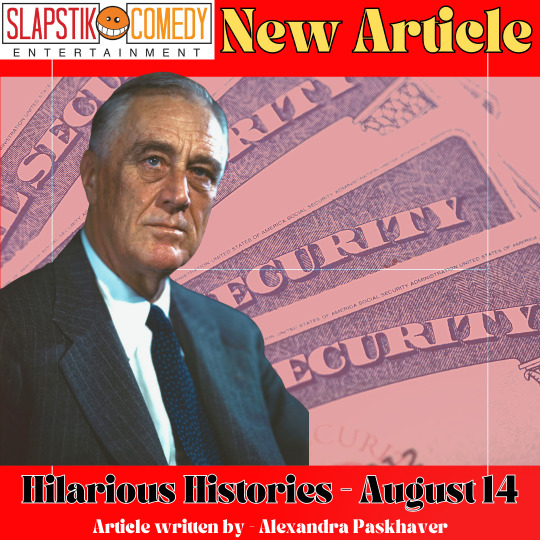
View On WordPress
#Augues 14 1885#hotta zuisho#maynard g. krebs#noncorrosive paint#president roosevelt#rust proof paint#social secruity act
0 notes
Text
Many reasons, indeed, would seem to justify the conviction that an approach with the object of establishing common security from ominous menaces, without excluding any nation from participating in the promising industrial development which the accomplishment of the project entails, will be welcomed, and be met with loyal cooperation in the enforcement of the necessary far-reaching control measures.
"Brighter than a Thousand Suns: A Personal History of the Atomic Scientists – Appendix A: Niels Bohr's Memorandum to President Roosevelt, July 1944" - Robert Jungk, translated by James Cleugh
#book quote#brighter than a thousand suns#appendix#robert jungk#james cleugh#nonfiction#niels bohr#memorandum#president roosevelt#franklin d. roosevelt#justification#conviction#security#industrial development#cooperation#control measures
0 notes
Text
"That's the kind of man I could have been if I hadn't had a Harvard education."
-- President Franklin D. Roosevelt, on Lyndon B. Johnson, then a young Congressman whose energy, ambition, and drive impressed FDR.
#History#Presidents#Presidential Quotes#Franklin D. Roosevelt#FDR#President Roosevelt#New Deal#Lyndon B. Johnson#LBJ#President Johnson#Presidential Relationships#Presidential Personalities#Quotes#Quotes by Presidents#Presidency#Harvard#Presidential History
25 notes
·
View notes
Text
It certainly surpasses the imagination of anyone to survey the consequences of the project in years to come, where, in the long run, the enormous energy sources which will be available may be expected to revolutionize industry and transport.
"Brighter than a Thousand Suns: A Personal History of the Atomic Scientists – Appendix A: Niels Bohr's Memorandum to President Roosevelt, July 1944" - Robert Jungk, translated by James Cleugh
#book quotes#brighter than a thousand suns#appendix#robert jungk#james cleugh#nonfiction#niels bohr#memorandum#president roosevelt#franklin d roosevelt#imagination#survey#consequences#revolutionary#industry#transport
0 notes
Text
Zeus: POSEIDON CONTROL YOUR CHILD!
Poseidon: I can do one of two things. I can be the God of the Sea or I can control Perseus Jackson. I cannot possibly do both.
#based on a Teddy Roosevelt quote about his daughter#I can do one of two things. I can be President of the United States or I can control Alice Roosevelt. I cannot possibly do both.#incorect quote#pjo#percy jackson#perseus jackson#teddy roosevelt#rick riordan#percy jackon and the olympians#percy jackson and the olympians#pjo poseidon#pjo zeus#sally jackson#incorrect pjo quotes#i thought it fit#chb#alice roosevelt#alice roosevelt longworth
1K notes
·
View notes
Text

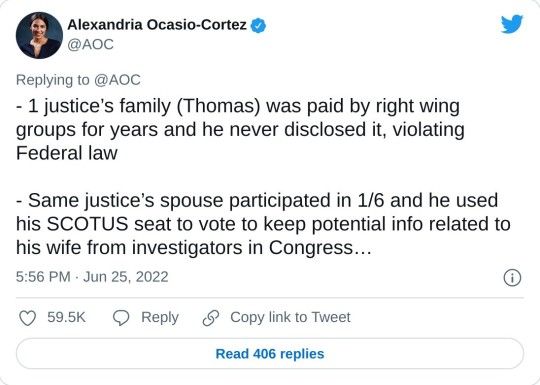
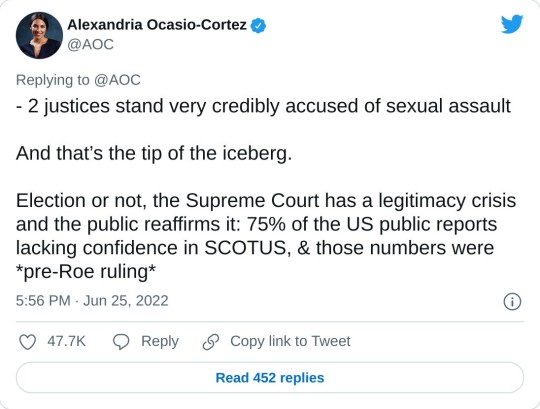
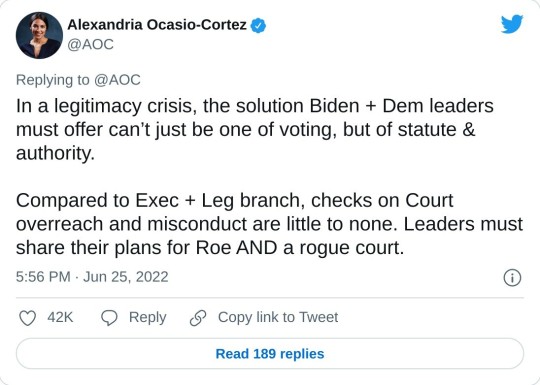
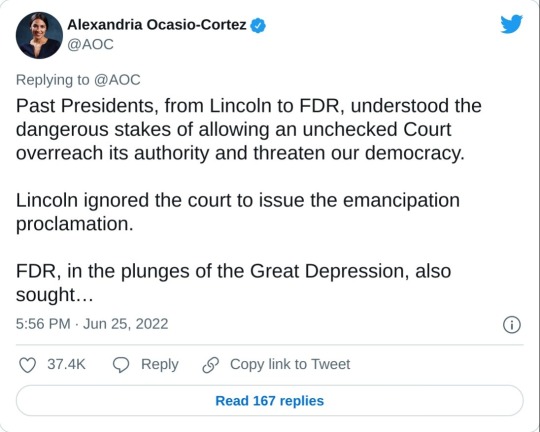





#us supreme court#2022 elections#2022 midterms#us congress#us house of representatives#us senate#biden administration#rep. alexandria ocasio cortez#new york#us history#President Franklin d. Roosevelt#president abraham lincoln#abortions#abortion bans#roe v. wade#scotus#us politics#news#twitter#tweet#2022#progressives#progressivism#democrats
16K notes
·
View notes
Text
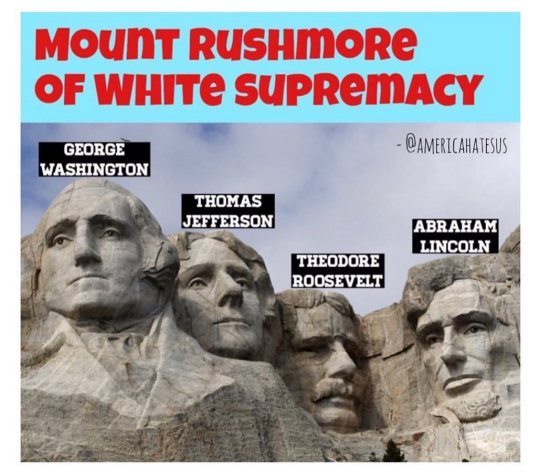


459 notes
·
View notes